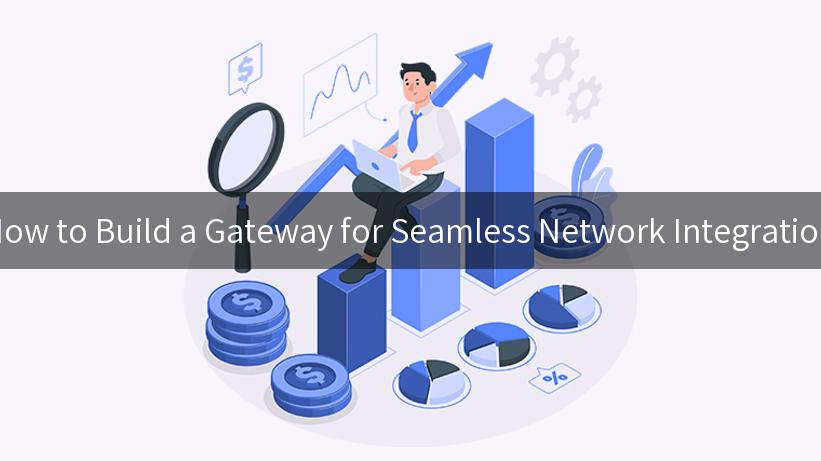
In the modern digital landscape, integrating various services and data sources has become essential for businesses. A well-built gateway acts as a bridge that facilitates seamless communication and collaboration between disparate systems. This article will guide you through the process of building a gateway for seamless network integration, focusing on key elements such as enterprise security, the usage of AI, and effective API governance, alongside a glance at solutions such as IBM API Connect.
Understanding the Importance of a Gateway
Building a gateway is vital for organizations that want to tap into the wealth of capabilities offered by APIs while maintaining security and governance. As organizations adopt new technologies and services, silos often emerge, making integration problematic. A gateway plays several roles in this context:
-
Facilitating Communication: A gateway standardizes the communication flow between different services and data sources, allowing them to speak a common language.
-
Enhancing Security: Enterprise security when using AI and APIs is paramount. A well-designed gateway can enforce security protocols to protect sensitive information.
-
Managing API Governance: Implementing robust API governance mechanisms through a gateway ensures that APIs are used correctly and that limits on API calls are respected, preventing misuse.
Step-by-Step Guide to Building a Gateway
To ensure that your gateway can efficiently handle integration while adhering to enterprise security and governance principles, follow these outlined steps:
Step 1: Assess Your Needs
Before diving into the technical details, assess the needs and goals of your organization. Understand what systems need integration, the types of APIs you’ll be using, and any specific security requirements.
Step 2: Choose the Right Gateway Solution
Several gateway solutions are available, but for robust enterprise features, consider implementing solutions like IBM API Connect. This platform facilitates easy management of API gateways with security and governance features built-in.
Step 3: Setup and Configuration
Follow this simplified method to deploy and configure your gateway:
-
Download and Install Gateway Software: If you’re using IBM API Connect, you can quickly install it by downloading the installation package and following the prompts.
-
Configure Your API Gateway: After installation, set up your APIs within the gateway. This involves defining endpoints, specifying security protocols, and setting usage limits on API calls.
Example Configuration
Here’s how you would typically begin configuration after installing IBM API Connect.
# Example command to start service
apiconnect start
Step 4: Implement API Governance
Establish rules and policies for your APIs to ensure compliance and effective resource management. With API governance, you can:
- Avoid overuse or misuse of resources by setting API call limitations.
- Monitor usage patterns and performance metrics.
Step 5: Enable Secure AI Interactions
As AI becomes integrated into various services, it’s crucial to ensure secure interactions. This involves:
- Establishing authentication and authorization processes.
- Utilizing encryption protocols for sensitive data transmissions.
Step 6: Testing and Deployment
Before deploying your gateway into a production environment, thorough testing is essential. Conduct various integration tests to ensure that your gateway handles requests as expected without compromising data security.
Step 7: Monitor and Maintain
Once deployed, it’s vital to continuously monitor the gateway operation. Tracking performance metrics, call limitations, and security incidents will help maintain effectiveness and avoid unexpected disruptions.
APIPark is a high-performance AI gateway that allows you to securely access the most comprehensive LLM APIs globally on the APIPark platform, including OpenAI, Anthropic, Mistral, Llama2, Google Gemini, and more.Try APIPark now! 👇👇👇
Integrating AI into Business Solutions
As organizations look to enhance efficiencies, integrating AI services can play a monumental role. For instance, businesses can tap into AI for real-time data analysis or personalized customer interactions. However, to leverage AI securely, businesses must consider the following:
-
Data Privacy: Protecting user data during AI interactions must follow stringent regulations.
-
Access Controls: Ensure that only authorized users can access AI services and the data being processed.
-
Compliance: Establish a clear policy on how AI services will be used and governed.
AI Service Utilization Example with APIPark
For integrating AI services within an existing gateway, consider leveraging platforms like APIPark for streamlined operation.
Configuration Example
Utilizing APIPark to invoke an AI service could look like this:
curl --location 'http://api.yourservice.com/ai' \
--header 'Content-Type: application/json' \
--header 'Authorization: Bearer <your-token>' \
--data '{
"messages": [
{
"role": "user",
"content": "How can I improve my workflow?"
}
],
"variables": {
"Context": "Looking for automation suggestions."
}
}'
This command sends a structured request to your AI service endpoint to retrieve insights or suggestions.
A Quick Overview of API Call Limitations
Efficient usage of APIs often comes with limitations on call frequency. Establish these limits to enhance performance management and protect resources.
| API Name |
Call Limitations |
Usage Type |
| AI Service 1 |
100 calls per minute |
Real-time operations |
| Data Service 2 |
50 calls per minute |
Batch processing |
Conclusion
In summary, building a gateway for seamless network integration is not only essential in today’s landscape but is also a significant step toward driving enterprise growth and maintaining security. By understanding the importance of enterprise security when using AI, implementing robust API governance, and smartly managing API call limitations, organizations can effectively leverage technology to foster innovation. Whether you choose to go with IBM API Connect or APIPark, ensure that your gateway is built with careful forethought and continuous monitoring for optimal results.
As your organization progresses through this journey, remain committed to updating your gateway with the latest security protocols and integration strategies to foster an adaptable infrastructure well-suited for future needs.
With this foundational knowledge, you are now better equipped to build a well-functioning gateway that will enable seamless integration and drive your business forward in a technology-driven world.